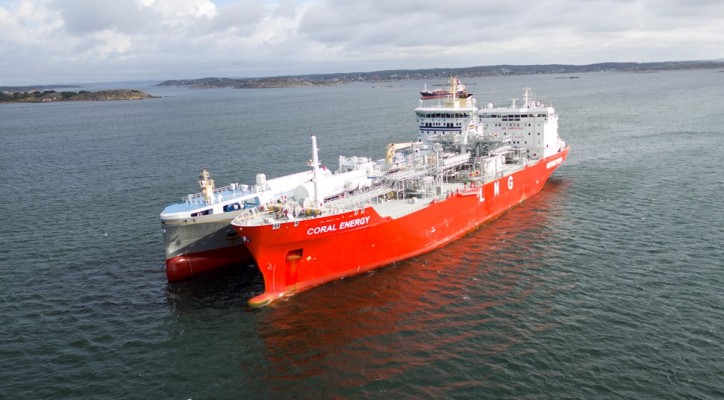Swedegas is investing in a new LNG infrastructure at the Port of Gothenburg, primarily to meet the need in the shipping industry for a more environmentally friendly fuel. This is the first LNG facility in Gothenburg, the largest port in Scandinavia, making it possible for vessels to bunker LNG at the quayside while loading and unloading. It is expected to be fully operational in 2018.

The need in the shipping industry for a viable alternative to heavy oil and diesel is being driven by increasingly stringent emission controls. LNG (Liquefied Natural Gas) is the cleanest marine fuel available and is the foremost alternative for e.g large-scale shipping. Emissions of sulphur dioxide and nitrogen oxides are a major problem, affecting both the air and environment. The use of LNG as a fuel reduces emissions of sulphur, particles and heavy metals to a minimum, nitrogen oxide emissions by 80 percent, and carbon dioxide emissions by 25 per cent.
“This investment marks the starting point for the gradual expansion of the facility, eventually supplying the transport sector and Swedish industry with liquefied gas. Regardless of the sector, it ultimately comes down to making the transition from oil-based products,” said Johan Zettergren, Swedegas chief executive.
The facility, which comprises a discharge station, a cryogenic pipeline and bunkering equipment, allows vessels to bunker LNG at the quayside while loading and unloading, thus making effective use of the time spent in port. There has been widespread demand in the shipping sector for this type of solution, and the concept has been designed in close consultation with key players on the market.
“We have for a long time believed in LNG as the fuel of the future. This investment by Swedegas is entirely in line with our ambition to reduce the environmental impact of shipping and establish a sustainable Scandinavian freight hub,” said Magnus Kårestedt, Gothenburg Port Authority chief executive.
Infrastructure for renewable gas
The facility is the first stage in the establishment of a more extensive gas infrastructure solution for the Port of Gothenburg that can also be connected to the gas transmission grid. As is the case with the grid, which is used for the transport of both natural gas and biogas, the new infrastructure at the port is flexible and can also be used for the storage and transport of renewable gas.
The EU has assigned the project PCI (Project of Common Interest) status, making it one of the most prioritised infrastructure projects in Europe. The EU has also approved support via the INEA (Innovation and Networks Executive Agency) to ensure the project can be realised. Swedegas has already signed an EPC (Engineering, Procurement and Construction) contract with a supplier for the actual construction of the facility.
The facility is being built at the quayside at the Energy Port at the Port of Gothenburg, where vessels can bunker LNG while loading or unloading. The LNG will be brought to the facility using trailers or containers, which will unload at a discharge station. The LNG will then be distributed via a 450-metre vacuum-insulated cryogenic pipeline to the quays in the Skarvik area at the Energy Port.
LNG is natural gas – mostly methane – that is cooled down to -162°C and converted temporarily into liquid form. Cooling means it takes up 600 times less space and it can be transported efficiently using sea, rail and road tankers. During combustion, emissions of carbon dioxide and nitric oxide are lower compared with oil-fired operation. Above all, sulphur and particle emissions are considerably lower. LNG is colourless, non-toxic and has no smell.
Swedegas is an infrastructure company that invests in smart energy systems. The company owns the gas transmission grid, which extends from Dragør in Denmark to Stenungsund in Sweden. Each year, Swedegas transports energy to distributors and directly connected customers. The gas transmission grid supplies 33 municipal areas with gas, as well as industrial enterprises, combined heat and power plants and vehicle filling stations. Swedegas is developing new infrastructure to accommodate biogas, hydrogen gas and liquefied natural gas (LNG).
Source: Port of Gothenburg